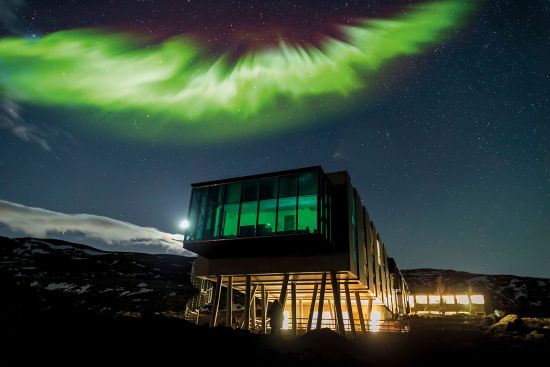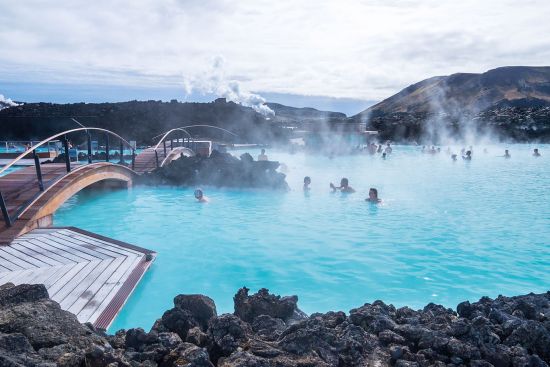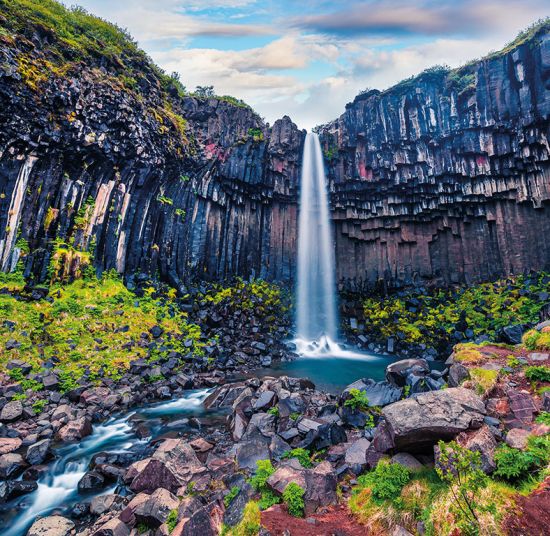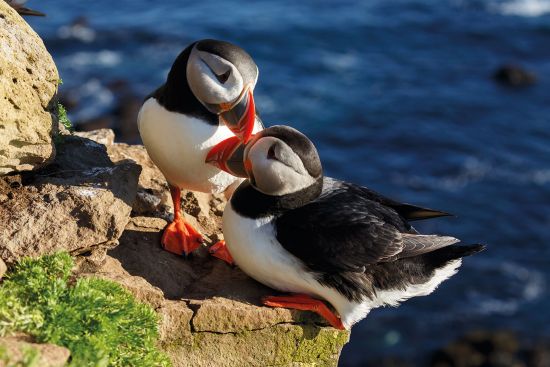
Fire and Ice: Top Five Reasons to Visit Iceland
Bleak and beautiful, Iceland’s rugged volcanic landscape and natural wonders provide the perfect escape for adventurous travellers, foodies and Game of Thrones
fans alike
Do you remember Eyjafjallajökull? The name may have slipped your mind – understandably enough – but when that particular Icelandic volcano erupted in 2010, for the first time in 187 years, it created a huge ash cloud that spread across Europe.
The immediate result was travel chaos and the cancellation of countless holidays. The long-term effect was quite the opposite, at least for Iceland. By putting this small nation of just 334,000 people under the spotlight, the eruption sparked a fourfold increase in tourism, helped along by a canny “Inspired by Iceland” marketing campaign on social media.
What all those new visitors found – and ever-increasing numbers are still finding – is a country of profound beauty that is largely untouched by the modern world, particularly those who choose to travel by cruise to Iceland. From stunning scenery to amazing nature and great food, here are our top five reasons to visit Iceland.
1. The scenery is spectacular.
Nature-lovers will be in their element in Iceland. There are opportunities to try horse-riding (for all levels) across the rugged, otherworldly landscape.
You can go trekking along black sandy beaches and across lava fields to hot springs, or 4×4-driving off the beaten track (an exhilarating experience with the weather changing every five minutes and Bjork or Sigur Ros turned up loud on the stereo).
And then there’s the Northern Lights. The best time of year to catch this natural phenomenon is between November and February. However, there is no exact science to knowing when that will happen, but to increase your chances, read our guide to chasing the Northern Lights.

2. The diving is incredible.
For those who prefer adventures of the aquatic kind, Iceland offers plenty – including a rare opportunity to swim between continents. The Silfra Fissure is the deep crack between the American and Eurasian tectonic plates, and the water here is straight from the nearby Langjökull glacier so it’s unbelievably clear but bone-freezingly cold.
Wetsuits are essential but the snorkelling is amazing – like discovering a lost world. For the more experienced, there is a diving programme that allows you to venture some 18 metres down into the fissure. It’s regularly rated among the world’s very best dives, and is without question unique.
Nearby, the Hvita river is the home of rafting in Iceland, an activity that has grown rapidly from its birth there in 1983 to become the country’s most popular adventure sport. The river, which carries the runoff from the Langjökull glacier down to the south coast, passes through an enticing variety of landscapes. The current varies from gentle to positively heart-pumping, but those who find the adrenaline-rush too much can chill out with a plunge from the volcanic cliffs into the glacial water.

For a more relaxing dip, there is the famous Blue Lagoon. Located on the Reykjanes Peninsula, a 30-minute drive from Reykjavik, this open-air geothermal spa with its balmy 38°C waters is the country’s most visited attraction, so you’ll need to book (see bluelagoon.com). It’s an experience not to be missed, but for once it’s not the work of Mother Nature. The pool dates back only to 1976, and is formed by the warm outflow from a geothermal power plant.
Smaller and less busy – but just as warm – is the Secret Lagoon, a couple of hours’ drive eastwards at Fluoir. Again man-made but much older, it transports you back to an age when bathing was a relaxing way to while away time with friends.
Another must-see are the country’s spectacular waterfalls, the most famous being Gullfoss, a breathtaking two-tiered cascade in the canyon of the Hvita river. This is part of Iceland’s “Golden Circle” tour, which also includes the geothermal area of Haukadalur and the Thingvellir national park, a UNESCO-listed site that is legendary for its fly-fishing.
Carry on round the Golden Circle and you’ll find the geysers – hot springs located on active volcanic terrain in the southwest of Iceland. The Great Geyser itself has been largely dormant in recent years but Strokkur, which is virtually next-door, erupts every 10 minutes or so, spewing jets of boiling water 30 metres into the chill Icelandic air.
3. Nature lovers will be in their element.
If it’s peace and tranquillity you’re after, trek out to explore the vast, surreal landscapes of Skaftafell in southeast Iceland. Partly wooded and partly glacial, it’s popular in summer with campers and hikers, but its 1,800 square miles give everyone room to breathe. Guided tours are available, or you can always strike out on your own. If boat trips are more your style, you’ll want to explore the Vestmannaeyjar archipelago, aka the Westman Islands, about 40 miles off the coast.

The largest and sole inhabited island is Heimaey, which suffered a terrible catastrophe in 1973 when a volcanic eruption destroyed more than 300 homes. Today it is best known for the world’s biggest puffin colony, which you can see as part of a guided Westman Islands Volcano Tour.
Summer visitors with time to spare can take advantage of the 20-hour daylight with whale-watching trips, which depart from the Old Harbour in Reykjavik or the fishing village of Husavik, further north.
Known as the whale capital of Iceland, Husavik sits on Skjalfandi Bay, where the plankton-rich waters attract humpback, minke and blue whales, among many others. Take your pick from four companies offering whale-watching trips, including Gentle Giants (gentlegiants.is) and Salka (salkawhalewatching.is).
4. You can do a Game of Thrones tour.
Iceland isn’t just for nature lovers. If you’re hooked on TV’s Game of Thrones, there is a locations tour that will thrill you to the core. Most popular with fans is Grjotagja, better known as the cave where Jon Snow and Ygritte enjoyed a passionate encounter.
Elsewhere, the scenes at The Bloody Gate were filmed at Thingvellir national park. This mystical landscape is also rich in somewhat older myths and legends – seek out the Museum of Icelandic Sorcery and Witchcraft to learn about invisibility spells, the Skrimslasetrid Museum for eye-witness accounts of sea monsters and mermaids, and, last but not least, there’s the Alfaskolinn elf school.
Based in Reykjavik, this establishment is dedicated to the study of Iceland’s elves – all 13 varieties of them. Surveys suggest that more than half the population believes in the existence of these, and it’s not unknown for construction workers to consult folklorists before moving a boulder, lest they disturb the little folk who have made their home there.

5. Foodies will be well-catered for.
Finally, if you’re a foodie, Iceland will spoil you for choice. In Reykjavik you can take a gastro-tour of half a dozen restaurants across the city, with an expert guide to tell you the stories behind the dishes you’re sampling. Also making waves in the world of gastronomy is the Silfra restaurant at the Ion adventure hotel, some 30 miles east of the capital.
In the converted staff quarters of an energy plant, built in an uncompromisingly brutalist style, they focus on “slow food” made from the freshest possible ingredients, untainted by unnecessary frills.
Keen carnivores shouldn’t miss the Grillmarkadurinn restaurant in central Reykjavik, where they fire up the grill to a blistering 1200°C so the meat is served crispy on the outside and tender on the inside.
For sensationally fresh shellfish, head for the harbourside Vitinn restaurant in Sandgerdi, where the crab feast is legendary. You could also try the local speciality of fermented skate, though that depends on the time of year – and how brave you’re feeling on the day.
Cruise Lines
Caribbean: Harvest Caye, Cozumel & Roatan
- 7 nights, departs on the 21 Feb 2025
- Norwegian Cruise Line, Norwegian Prima
- Galveston, Texas, Costa Maya, Harvest Caye, + 3 more
Caribbean: Harvest Caye, Cozumel & Roatan
- 7 nights, departs on the 28 Feb 2025
- Norwegian Cruise Line, Norwegian Prima
- Galveston, Texas, Costa Maya, Harvest Caye, + 3 more
Caribbean: Harvest Caye, Cozumel & Roatan
- 7 nights, departs on the 07 Mar 2025
- Norwegian Cruise Line, Norwegian Prima
- Galveston, Texas, Costa Maya, Harvest Caye, + 3 more
Caribbean: Harvest Caye, Cozumel & Roatan
- 7 nights, departs on the 14 Mar 2025
- Norwegian Cruise Line, Norwegian Prima
- Galveston, Texas, Costa Maya, Harvest Caye, + 3 more
